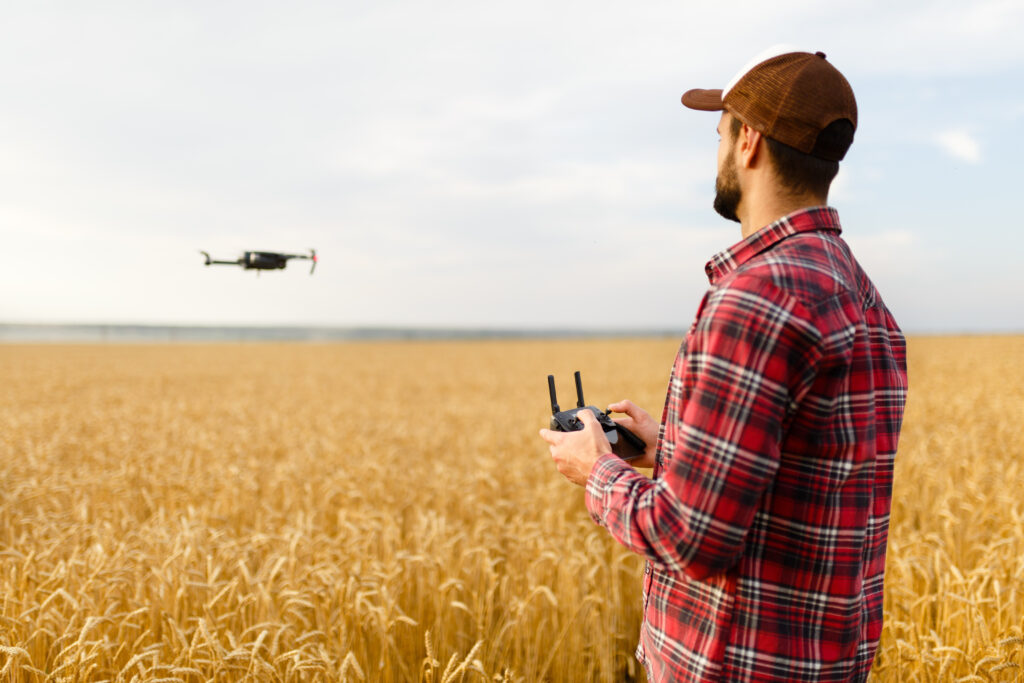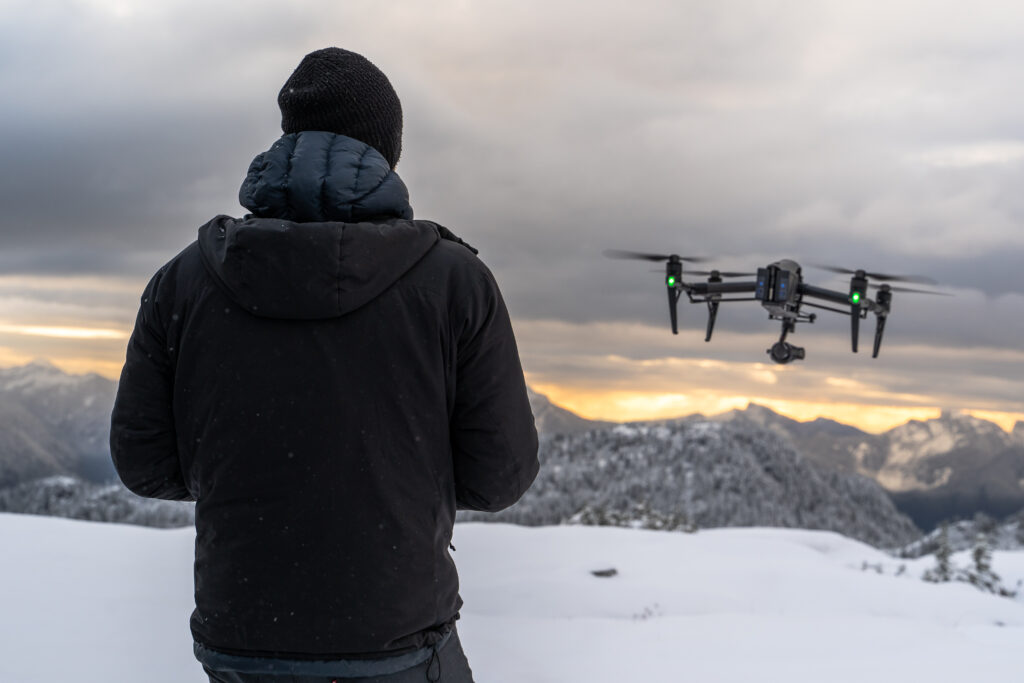By: Bronwyn Morgan, AG Training & Education Ambassador
On August 5, 2025, the Federal Aviation Administration (FAA) unveiled a groundbreaking proposed rule to standardize Beyond Visual Line of Sight (BVLOS) drone operations. It normalizes BVLOS operations and alleviates the need for individual waivers. While the rule is not yet final (there is a 60 day comment period, then the FAA has to adjudicate those comments, before publishing a final rule), the draft version provides insights into what we might expect, in terms of drone pilot training programs, among many other things. In this article, we dive into what Part 108 likely means for the future of drone pilot training and how it will impact both new and seasoned drone operators. Spoiler Alert: Expect this regulatory shift to trigger the need to overhaul curriculums, certification processes and operational protocols.
What is Part 108?
Part 108 creates a comprehensive framework for safe drone operations in shared airspace. It paves the way for the broad use of drones in sectors such as logistics, agriculture and disaster response and other missions that increasingly require autonomous, long-range flights
The rule provides two primary authorization pathways for BVLOS operations that once required waivers from the FAA:
- Permits: These are for lower-risk operations, typically involving smaller fleets and lighter aircraft. This category will be ideal for industries like agriculture, where drones are used to monitor crops and gather environmental data.
- Certificates: For higher-risk operations, involving larger aircraft or extensive fleets, this pathway comes with more stringent oversight. Large-scale delivery services, infrastructure monitoring and emergency response operations will fall under this category.
To ensure safety and compliance, the rule mandates the use of advanced technologies, including remote identification, automated data services and lighting systems. Operators must also implement safety management systems (SMS) and ensure their personnel are properly trained. (See prior AG coverage on Part 108 and SMS here).
Industry leaders have widely welcomed the proposed rule, recognizing its potential to simplify drone operations while enhancing safety. Lisa Ellman, CEO of the Commercial Drone Alliance, praised the FAA for taking a collaborative approach in developing the new rule. “Our industry has been waiting for this day for quite a while now,” Ellman said.
Cade Clark, Chief Government Affairs Officer at Vertical Aviation, also lauded the FAA’s effort to strike a balance between safety and innovation. “By releasing this monumental rulemaking, the FAA is working to balance the need for safety with the continued utilization of UAS technology,” Clark remarked.
Yet, as Ellman also noted, “our work has just begun”. No where is this more true than in the area of drone pilot training programs, which will need to evolve with the new requirements.
Drone Pilot Training: Curriculum Overhaul
Training providers will need to update their curricula to reflect the new requirements set by Part 108. Key areas of focus should include:

- Risk Management Strategies: Training will need to cover the complexities of operating drones without visual contact. Pilots must learn how to manage operations safely, with a particular focus on risk management strategies that mitigate the dangers associated with BVLOS flights.
- Advanced Technologies: Drones used for BVLOS operations must be equipped with cutting-edge technologies such as detect-and-avoid systems and automated data services. Pilots will need to be trained to operate these advanced systems effectively to ensure that they remain in compliance with FAA regulations and air traffic control protocols.
- Safety Management Systems (SMS): Part 108 mandates the use of SMS, a key component of larger-scale operations. Pilots will need to learn how to develop and adhere to operational safety protocols, which include reporting and tracking potential risks and hazards associated with each flight.
- Emergency Protocols: In BVLOS conditions, pilots must be prepared for emergency scenarios where visual reference to the drone is lost. Training programs will need to emphasize the development of clear emergency procedures to ensure pilots know how to react quickly and effectively when technical failures, communication breakdowns or unexpected obstacles arise.
New Certifications and Licensing
Under Part 108, drone pilots will need to obtain additional certifications to operate under the new rule. These certifications will be more specialized than the existing Part 107 certification, particularly for those involved in high-risk operations such as large-scale commercial deliveries or infrastructure inspections.
The FAA is expected to introduce separate certification categories for operators based on the complexity and risk level of their operations. Drone pilots may need to complete additional training hours and pass rigorous testing to qualify for these new certifications.
For operators involved in high-risk flights, additional endorsements or ratings will be required to ensure they are adequately prepared for the challenges posed by BVLOS operations.
Changing Operational Protocols
Alongside new certifications, drone pilot training will also need to emphasize the development of operational protocols that align with Part 108’s requirements. Here’s what these protocols will include:
- Fleet Management: Larger operations often involve multiple drones operating simultaneously. Pilots will need to learn how to manage fleets effectively so drones operate within safe parameters and each aircraft remains in constant communication with the ground team.
- Communication with Air Traffic Control (ATC): BVLOS operations may take place in controlled airspace. This means that pilots will need to be able to communicate with ATC. Training must focus on how to maintain communication and ensure that the airspace remains deconflicted to minimize the risk of collisions with manned aircraft.
- Adherence to Federal Regulations: Compliance with both Part 107 and Part 108 is essential. Training will ensure that pilots clearly understand the updated regulations governing drone operations, including how to file flight plans, manage operational risks and respond to airspace constraints.
The Role of UTM and Remote ID
A key part of Part 108 is integration with Unmanned Aircraft System Traffic Management (UTM) and Remote ID systems.
- UTM Systems: Allow for the management of drone traffic in shared airspace to enable BVLOS operations that safely coexist with manned aircraft operations.
- Remote ID: A technology that allows drones to broadcast their location and other flight data to provide situational awareness for drone operators and those with a need to know, including ATC.
Under Part 108, pilots will be required to understand and use these new systems, which must be incorporated into their training programs.
Required Training Checklist
Importantly, new FAA BVLOS NPRM radically shifts from “individual pilot licensing” toward an operator-driven, role-based, recurrent training approach. Here’s a succinct training checklist in line with the proposed requirements, ensuring operational safety and compliance for all personnel involved in BVLOS UAS operations:

1. Establish Required Personnel Roles (Subpart C)
- Operations Supervisor: Overall safety and regulatory compliance authority.
- Flight Coordinator: Tactical oversight of specific flights (if required by UA design).
- Supporting staff: ground handlers, maintenance, payload operators, etc.
2. Initial and Recurrent Training Requirements
- Document training programs tailored to each role.
- Adhere to recurrent training every 24 months minimum for all personnel.
- Implement role-specific minimums, such as, flight coordinators will need at least five hours of supervised flight experience on the make/model of UA and recent experience (within the past 12 months).
3. General Training and Knowledge/Curriculum Must Include:
- Applicable FAA/UAS regulations and company policies.
- Airspace classification, flight restrictions, NOTAM review.
- Weather assessment and effects on UA.
- Crew resource management and operational communications.
- Safe distance criteria and separation responsibilities (including Detect and Avoid tech).
- Strategic deconfliction and conformance monitoring principles.
- Aircraft performance, weight, and balance.
- Effects of drugs/alcohol, fatigue, and fitness for duty.
- Night operations, airport and heliport procedures.
- Aeronautical decision-making and emergency response.
- Population density category assessment and operational implications.
4. Make/Model-Specific Training Requirements:
- Preflight procedures and system configuration.
- Normal/abnormal/emergency procedures.
- Loading, payload security, hazardous materials awareness.
- Maintenance and inspection procedures.
- Navigation, DAA systems, and contingency/recovery.
- Multi-aircraft operations if authorized.
5. Medical Fitness & Drug/Alcohol Restrictions
- Personnel must self-monitor and report fitness for duty.
- No one may serve if aware of any physical/mental condition impairing safe operations.
6. Duty and Fatigue Management
- Enforce maximum 14-hour duty period, at least 10 consecutive hours off within any 24-hour cycle, and one day of rest per week.
7. Security Threat Assessment
- Ensure key personnel (supervisors, flight coordinators, those with unescorted access) undergo security threat assessment (TSA) as required.
8. Training Records and Documentation
- Maintain:
- Qualifications, training (initial and recurrent), and experience records for all personnel.
- Records must be retained for at least 12 months after separation and be available for FAA inspection.
- Qualifications, training (initial and recurrent), and experience records for all personnel.
Training Takes On a New Meaning
As BVLOS operations become more commonplace, the demand for highly trained, certified drone pilots will rise. The ability to fly BVLOS without a waiver opens up new opportunities for growth, but it also raises the stakes.
To keep pace with the evolving landscape, pilots will need to be continuously trained and certified so they meet the new regulatory standards.
Operators are responsible for ensuring their entire team meets these training and qualification requirements under the new rule, documented through up-to-date policies, training logs and recurrent proficiency checks.
For training providers, this means a need for ongoing curriculum development, certification updates and adaptation to new technologies.
Everyone will need to step up their training game, to make sure the industry keeps pace with the regulations that finally open up the skies for repeatable and scalable drone operations!
Summary Checklist
| Training Requirement | Applies to | Frequency |
| Initial/Role-Specific Training | All personnel | Before assignment |
| General Aviation Knowledge (regs, comms, airspace, etc) | All personnel | Every 24 months |
| Aircraft Make/Model, Emergency Procedures | Relevant personnel (pilot/maint, etc.) | Every 24 months |
| Operations Supervisor/Flight Coordinator Recency | Supervisors, flight coordinators | 5 hrs in 12 mo |
| Security Threat Assessment | Sensitive positions | As required |
| Recordkeeping | Operator/HR | Ongoing |
| Medical/Fitness/Drug & Alcohol | All personnel | Self-assess daily |
Written by Bronwyn Morgan, FAA Part 107, FAA Drone Pro, FAASTeam, CEO, Airversity Drone Pilot Academy

